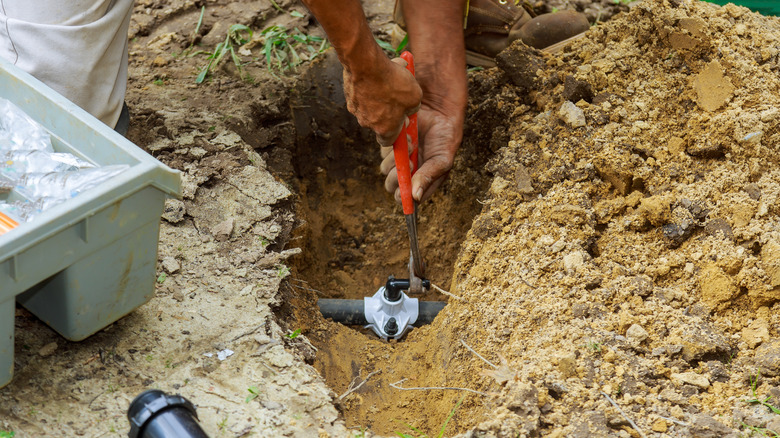We may receive a commission on purchases made from links.
When it comes to growing grass in your yard that’s going to be the envy of the neighborhood, there’s a lot of work to do. One of the daily tasks involves watering the lawn at the right time of day, usually before 10 a.m., and applying the right amount of water to maintain the lawn. This can be a challenge when you are doing the job by hand with sprinklers or a garden hose. If you’re looking for an easier option that gives you more precise results, you may want to consider an automatic sprinkler system. These systems let you set the exact time that they will operate, while also delivering an exact amount of water needed. But is setting up and operating the system cost-effective?
Even over time, the automatic sprinkler system may not pay for itself through a lower water bill since the installation and maintenance costs are pretty high compared to using a hose. However, when you begin to calculate the amount of time you spend moving hoses and sprinklers around during the growing season and the potential for uneven watering when you’re doing it by hand, it may make the automated system a great value for your particular situation. Additionally, when the watering is uneven, you may end up spending more on fertilizer and herbicides for weeds. Weeds grow more frequently when the grass itself is weaker.
The cost of installing and using a sprinkler system vs. hoses

It’s not cheap to install a new lawn sprinkler system, as you can pay an average of about $3,100. The size of your property plays the biggest role in determining whether you’ll pay more or less than the average. You also are going to have ongoing maintenance and repair costs with an automated watering system. You can expect to pay around $100 for annual maintenance, while you might pay up to $400 if you need more extensive repair to the system, such as cleaning out the heads. A backflow preventer is a key component of the automated sprinkler system, and this part can cost as much as $1,600 to replace, including labor.
If you compare these costs to the cost of purchasing 100 feet of hose at Amazon (for about $60), or a manual sprinkler at Amazon (for about $25), manually watering your lawn is far more cost-effective.
Even with the sprinkler system being far more efficient for watering than using a hose, a water bill only costs between $50 and about $150 per month during the growing season, depending on the cost of water in your area and the size of your lawn. Based on these numbers, although it’s difficult to calculate exactly, your savings with the more efficient automatic system likely would be less than roughly $50 per month.
Effectiveness of using sprinkler system vs. manual hoses
Although the actual cost of installing and using an automated sprinkler system versus moving around a hose is important, the time and effort required to do the watering also is part of the value equation. When you have an automated sprinkler system installed, you can set it to run at a certain time every day or every other day. It can operate for a certain amount of time, too, ensuring that your grass always receives the precise amount of water that you want to deliver. Once you calibrate a sprinkler system properly, you invest very little time.
When you choose to water by hand, though, you can spend almost the entire day moving hoses and sprinklers around. Even if you have multiple hoses and sprinklers, you may need to move everything a few times to cover the entire space. If you want to move the hoses every 60 to 90 minutes, you could end up spending most of the day on this task, leaving you unable to leave the house.
If you forget to move the hoses or if you miss a certain segment of the grass because of improper placement of the sprinklers, you may end up overwatering or underwatering certain areas, causing additional problems for the health of your lawn. “People who water by hand … tend to view watering as a chore, and tend to underwater,” Brent Meacham, industry development director with Minnesota’s Irrigation Association told PantanoPowerEquipment.
